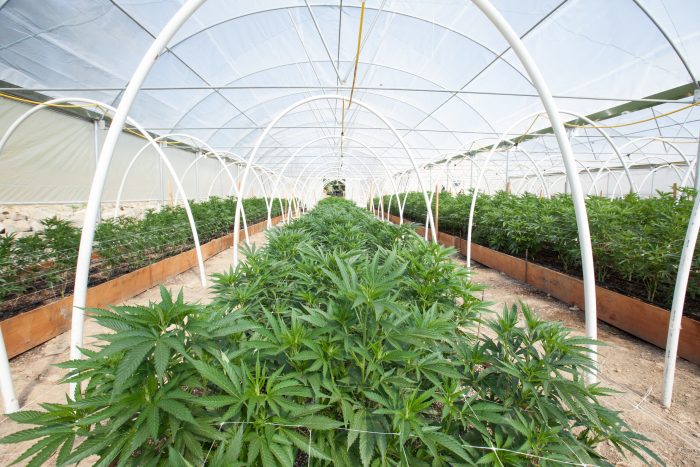Medical Marijuana License Info
Information will be updated here as it becomes available. Check back for updates! Please note; while we aim to keep this pages fully up to date with the latest information, cannabis laws are always changing. We encourage you to verify these rules and regulations in the official legal text, which we’ve linked throughout the page for your convenience.
Montana Seed-to-Sale Traceability Info
Registered Providers and Infused Product Providers are subject to the following regulations related to inventory control, compliance, and seed to sale traceability:
(14) A licensee must use a standardized scale whenever marijuana items are:
- (a) packaged for sale by weight;
- (b) bought and sold by weight; and
- (c) weighed for entry into the inventory tracking system.
(15) A licensee must maintain the following records in either paper or electronic form on the registered premises for at least three years:
- (a) financial records that clearly reflect all financial transactions; and
- (b) all licensee employee training and payroll records.
New Rule VII Labeling of Marijuana Items
(1) Prior to marijuana items being sold or transferred to a registered cardholder the container holding the usable marijuana items must have a label that has the following information:
- (a) licensee business or trade name and licensee registration number;
- (b) date of harvest of marijuana or date the marijuana item was manufactured;
- (c) name of strain or marijuana item (common or usual name);
- (d) net weight or volume in U.S. customary and metric units;
- (e) concentration by weight or volume of THC, THCA, CBD, and CBDA;
- (f) amount suggested for use by the registered cardholder at any one time; and
- (g) unique identification number.
(2) Labels must include a consumer warning that states:
- (a) “For use by Montana Medical Marijuana Program registered cardholders only. Keep out of reach of children.”;
- (b) “It is illegal to drive a motor vehicle while under the influence of marijuana.”; and
- (c) “This product is not approved by the U.S. Food and Drug Administration (FDA) to treat, cure, or prevent any disease.”
(3) If the marijuana item has passed required testing, the licensee must include on the label: “This Product Has Been Tested and Meets the Quality Assurance Requirements of the State of Montana.”
(4) Licensees with ten or fewer registered cardholders who are not required to submit marijuana items for testing and have not submitted marijuana items for testing must include on the label: “This Product Has Not Been Tested for compliance with Quality Assurance Requirements of the State of Montana.”
(5) Additional labeling requirements for marijuana topicals, ointments, suppositories, and other marijuana products not intended to be administered orally must include:
- (a) “DO NOT EAT” in bold capital letters; and
- (b) a list of ingredients in descending order or predominance by weight or volume used to process the product.
(6) Additional labeling requirements for edible marijuana products and tinctures must include:
- (a) “BE CAUTIOUS” in bold capital letters, followed by “This product can take up to two hours or more to take effect”;
- (b) if the marijuana item is perishable, a statement that the marijuana item must be refrigerated or kept frozen;
- (c) list of potential major food allergens;
- (d) a “contains” statement to summarize the major food allergen information at the end of or immediately adjacent to the ingredient list; or
- (e) a statement of the appropriate major food allergen in parenthesis within the ingredient list after the common or usual name of the ingredient derived from that major food allergen.
(7) Additional labeling requirements for marijuana concentrates and extracts must include:
- (a) “DO NOT EAT” in bold capital letters;
- (b) extraction method and solvent.
(8) Labels required by these rules must:
- (a) be placed on the container and on any packaging, that is used to display marijuana items for sale or transfer to a registered cardholder;
- (b) be in no smaller than eight point Times New Roman, Helvetica, or Arial font;
New Rule IX Quality Assurance Testing Sample Requirements
(1) A licensee must separate each harvest lot of usable marijuana into no larger than five-pound test batches.
(2) A licensee must separate each process lot of a marijuana-infused product into no larger than 5,000 unit-of-sale test batches.
(3) A process lot is considered a test batch for marijuana concentrates and extracts.
(4) Usable marijuana consisting of dried leaves and flowers may only be sampled after it is cured.
(5) Sufficient sample increments must be taken for analysis of all required tests and the quality control performed by the testing laboratory for these tests.
(6) A licensee must provide a laboratory the following documentation at the time of testing:
- (a) the unique identification number;
- (b) licensee business or trade name and licensee registration number;
- (c) the date the sample was collected;
- (d) the weight of the sample; and
- (e) whether the tests being requested are:
- (i) compliance tests;
- (ii) quality control or research and development tests;
- (iii) being re-sampled because of a failed test; or
- (iv) being retested after undergoing remediation or sterilization.
(7) Following samples being taken from a harvest or process lot, a licensee must label each test batch with:
- (a) the name and accreditation number of the laboratory responsible for the testing;
- (b) the sample unique identification numbers supplied by the laboratory personnel; (c) the date the samples were taken; and
- (d) in bold capital letters, no smaller than 12-point font, “PRODUCT NOT TESTED.
New Rule X Quality Assurance Testing Requirements
(1) A licensee must submit for testing every test batch from a harvest lot of marijuana and process lots of marijuana-infused product, extracts, and concentrates intended for use by a registered cardholder prior to selling or transferring the marijuana item to a registered cardholder.
(2) Usable marijuana lots consisting of dried leaves and flowers must be tested for the following:
- (a) cannabinoid profile;
- (b) moisture analysis;
- (c) foreign matter screening;
- (d) microbiological screening;
- (e) heavy metals screening; and
- (f) pesticides screening.
(3) Marijuana concentrate and extract lots must be tested for the following:
- (a) cannabinoid profile;
- (b) microbiological screening;
- (c) heavy metals screening;
- (d) residual solvents screening; and
- (e) pesticides screening.
(4) Marijuana-infused products must be tested for the following:
- (a) cannabinoid profile.
(5) The cannabinoid profile for each sample must include:
- (a) THCA;
- (b) THC;
- (c) Total THC;
- (d) CBDA;
- (e) CBD; and
- (f) Total CBD.
(6) The sample and related lot or test batch fail quality assurance testing for moisture analysis if the results exceed the following limits:
- (a) water activity rate of more than 0.65 aw; and
- (b) moisture content more than fifteen percent.
(7) The sample and related lot or test batch fail quality assurance testing for foreign matter screening if the results exceed the following limits:
- (a) two percent of stems 3mm or more in diameter; and
- (b) five percent of seeds or other foreign matter.
(8) The sample and related lot or test batch fail quality assurance testing for microbiological screening if the results exceed the following limits:
- (a) Salmonella: 10 CFU/g;
- (b) E. Coli: 10 CFU/g;
- (c) Total of Aflatoxin B1, B2, G1, G2: 20 μg/kg; and
- (d) Ochratoxin A: 20 μg/kg of substance.
(9) A sample and related lot or test batch fail quality assurance testing for residual solvents if the results exceed the limits provided in the table below.
(11) A sample and related lot or test batch fail quality assurance testing for pesticides if the results exceed the limits provided in the table below.
New Rule XI Failed Test Samples
(1) If a sample fails any initial test, the laboratory that did the testing must reanalyze the sample.
(2) A licensee must request a reanalysis within seven calendar days of receiving notice from the laboratory of any failed testing.
(3) The reanalysis must be completed by the laboratory within 30 days of receiving the request from the licensee.
(4) If the sample passes reanalysis, a second laboratory must sample the test batch and confirm the results for the test batch to pass testing.
(5) The licensee is responsible for the costs of reanalysis.
(6) A licensee is not permitted to sell or transfer to a registered cardholder, marijuana items that have failed a test.
(7) Failed harvests, lots, or test batches may be remediated so long as the remediation method does not impart any toxic or deleterious substance to the usable marijuana, marijuana concentrates, or marijuana-infused product.
(8) Remediation methods used on the marijuana item must be disclosed to the department.
(9) No remediated harvests, lots, or test batches may be sold until the completion and successful passage of quality assurance testing as required in these rules and Montana statute.
(10) If a sample fails and cannot be remediated or sterilized the test batch must be destroyed.
(11) A licensee must document all sampling, testing, sterilization, remediation and destruction that are a result of failing a test under these rules.
(13) A licensee must maintain the following records for at least three years. Records may be kept in either paper or electronic form on the premises:
- (a) financial records that clearly reflect all financial transactions;
- (b) testing documentation; and
- (c) all licensee employee training and payroll records.
New Rule XIV Inventory Tracking System User Requirements
(10) If a licensee uses a separate software application that links to the inventory tracking system it must get approval from the inventory tracking system vendor contracting with the department and the software application must:
- (a) accurately transfer all relevant inventory tracking system data to and from the inventory tracking system; and
- (b) preserve original inventory tracking system data when transferred to and from a secondary application.
(11) If a licensee loses access to the inventory tracking system, the licensee must keep and maintain comprehensive records detailing all tracking inventory activities that were conducted during the loss of access.
(12) Once access is restored, all inventory tracking activities that occurred during the loss of access must be entered into the inventory tracking system.
(13) A licensee must document when access to the inventory tracking system was lost and when it was restored.
(14) A licensee may not transport any marijuana items to another registered premises until access is restored and all information is recorded into the inventory tracking system.
New Rule XV Inventory Tracking and Reconciliation
(1) A licensee must use the department’s selected inventory tracking system as the primary inventory and record keeping system.
(2) Each individual marijuana plant that reaches a height of twelve inches must be issued a unique identification number in the inventory tracking system, which follows the plant through all phases of production and final sale to a registered cardholder.
(3) All marijuana items, test batches, harvest lots, and process lots must be issued a unique identification number in the inventory tracking system.
(4) Unique identification numbers cannot be reused.
(5) Each marijuana plant, marijuana item, test batch, harvest lot, and process lot that has been issued a unique identification number must have a physical tag placed on it with the unique identification number.
(6) The tag must be legible and placed in a position that can be clearly read and must be kept free from dirt and debris.
(7) Licensees must use unique identification tags provided by the department.
(8) All on-premises and in-transit marijuana item inventories must be reconciled in the inventory tracking system at the close of business each day.
(9) For each marijuana sale or transfer to a registered cardholder, the following must be recorded in the inventory tracking system at the close of business each day:
- (a) the amount;
- (b) the price before tax; and
- (c) the date of the sale or transfer to a registered cardholder.
(10) Licensees must record in the inventory tracking system:
- (a) wet weight of all harvested marijuana plants immediately after harvest;
- (b) information for marijuana items by unit count;
- (c) weight per unit of a product;
- (d) weight and disposal of post-harvest waste materials;
- (e) theft or loss of marijuana items; and
- (f) other information as may be required by the department.
(11) These requirements do not apply to marijuana items held by a laboratory licensee that are undergoing analytical testing, so long as the marijuana items do not leave the laboratory’s licensed premises and are reconciled on the same day that the quality assurance testing concludes.
(12) All samples taken for quality assurance testing must be recorded in the inventory tracking system.
(13) Licensed testing laboratories must record all testing results in the inventory tracking system.
(14) All transport manifests must be generated by the inventory tracking system and contain all the information required by these rules.
(15) A receiving location must document in the inventory tracking system any marijuana items received, and any differences between the quantity specified in the transport manifest and the quantities received.
New Rule XVI Transportation and Delivery of Marijuana Items
(1) Marijuana items may only be transported between registered premises or licensed testing laboratories by a licensee or licensee employee.
(2) A printed transport manifest must accompany every transport of marijuana items. The manifest must contain the following information:
- (a) registered premises address and license number of departure location;
- (b) address and license number or cardholder number of receiving location;
- (c) product name, quantities (by weight or unit), and unique identification numbers of each marijuana item to be transported;
- (d) date and time of departure;
- (e) date and time of arrival;
- (f) delivery vehicle make, model, and license plate number; and
- (g) name and signature of each licensee or licensee employee accompanying the transport.
(3) The transport manifest may not be voided or changed after departing from the originating registered premises.
(4) A copy of the transport manifest must be given to each location receiving the inventory described in the transport manifest.
(5) A registered premises is prohibited from receiving any marijuana items from transit without a valid transport manifest.
(6) The receiving location must ensure that the marijuana items received are as described in the transport manifest and must record receipt of the inventory.
(7) The receiving location must document any differences between the quantity specified in the transport manifest and the quantities received.
(8) Any vehicle transporting marijuana items must be capable of:
- (a) keeping marijuana items in transit shielded from public view;
- (b) securing (locking) the marijuana items during transportation; and
- (c) being temperature controlled if perishable marijuana items are being transported.
(9) A licensee must contact the department within 24 hours if a vehicle transporting marijuana items is involved in an accident that involves product loss. (10) Copies of the transport manifest and delivery receipts must be presented to law enforcement officers or authorized department employees if requested.
New Rule XVII Waste Management
(1) A licensee must store, manage, and dispose of solid and liquid waste generated during marijuana production and processing in accordance with applicable state and local laws and regulations.
(3) Waste that must be rendered unusable prior to disposal includes:
- (a) marijuana plant waste, including roots, stalks, leaves, and stems that have not been processed with solvent;
- (b) waste solvents used in the marijuana process;
- (c) spent solvents, laboratory waste, and excess marijuana from any quality assurance testing; and
- (d) marijuana items that ultimately fail to meet testing requirements.
(4) A licensee must maintain accurate and comprehensive records regarding waste material that accounts for, reconciles, and evidences all waste activity related to the disposal of marijuana to include:
- (a) what was disposed;
- (b) quantity by weight or volume;
- (c) date disposed;
- (d) disposal method;
- (e) reason for the disposal;
- (f) identity of who disposed the waste; and
- (g) record of the destination of marijuana waste rendered unusable.
(5) A licensee must provide a minimum of 72 hours’ notice in the inventory tracking system prior to rendering the marijuana item unusable and disposing of it.
“Harvest lot” means a specifically identified quantity of marijuana that is cultivated utilizing the same
Click here to view the complete Medical Marijuana Act
Montana’s Medical Marijuana Program is operated by the Department of Public Health and Human Services
Click here to contact us or submit a support ticket
For the latest cannabis-related legislative updates on Montana, check out our Cannabis Bill Tracker!






